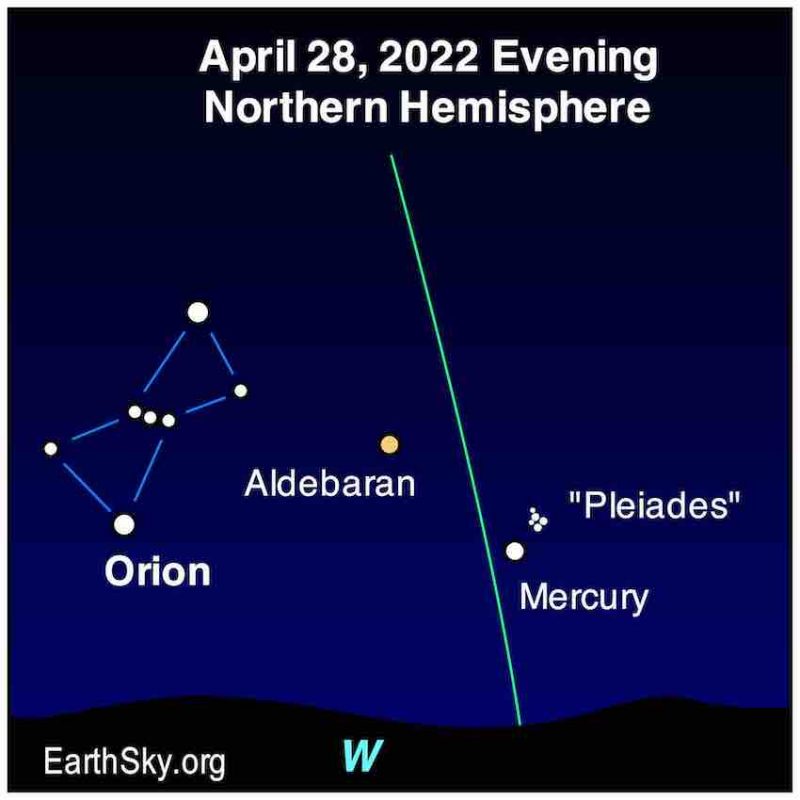
For the Northern Hemisphere, mid-April to mid-May is Mercury’s best evening apparition of 2022.
When to watch: Mercury will come into view after sunset in mid-April and be gone again by mid-May. Greatest elongation – when Mercury will be farthest from the sunset – is late April.
Where to look: Look in the sunset direction, as the sky is darkening.
Greatest elongation is 8 UTC on April 29, 2022.
Note: As the innermost planet, Mercury is tied to the sun in our sky. It never ventures very far above the horizon after sunset. As soon as the sun disappears below your horizon, the clock starts ticking. Will you see the glowing point of light that is Mercury before it follows the setting sun?
At greatest elongation in April 2022:
– Mercury’s distance from sun on the sky’s dome is 21 degrees.
– Mercury shines at magnitude 0.3
– Through a telescope, Mercury appears 36% illuminated, in a waxing crescent phase, 8 arcseconds across.
For precise sun and Mercury rising times at your location:
Old Farmer’s Almanac (U.S. and Canada)
Timeanddate.com (worldwide).
Stellarium (online planetarium program)
Mercury events in 2022 and 2023
Jul 16, 2022: Superior conjunction (passes behind sun as seen from Earth)
Aug 27, 2022: Greatest elongation (evening)
Sep 23, 2022: Inferior conjunction (races between Earth and sun)
Oct 8, 2022: Greatest elongation (morning)
Nov 8, 2022: Superior conjunction (passes behind sun as seen from Earth)
Dec 21, 2022: Greatest elongation (evening)
Jan 7, 2023: Inferior conjunction (races between Earth and sun)
Jan 30, 2023: Greatest elongation (morning)
Mar 17, 2023: Superior conjunction (passes behind sun from Earth)
Apr 11, 2023: Greatest elongation (evening)
Heliocentric view of Mercury April 2022
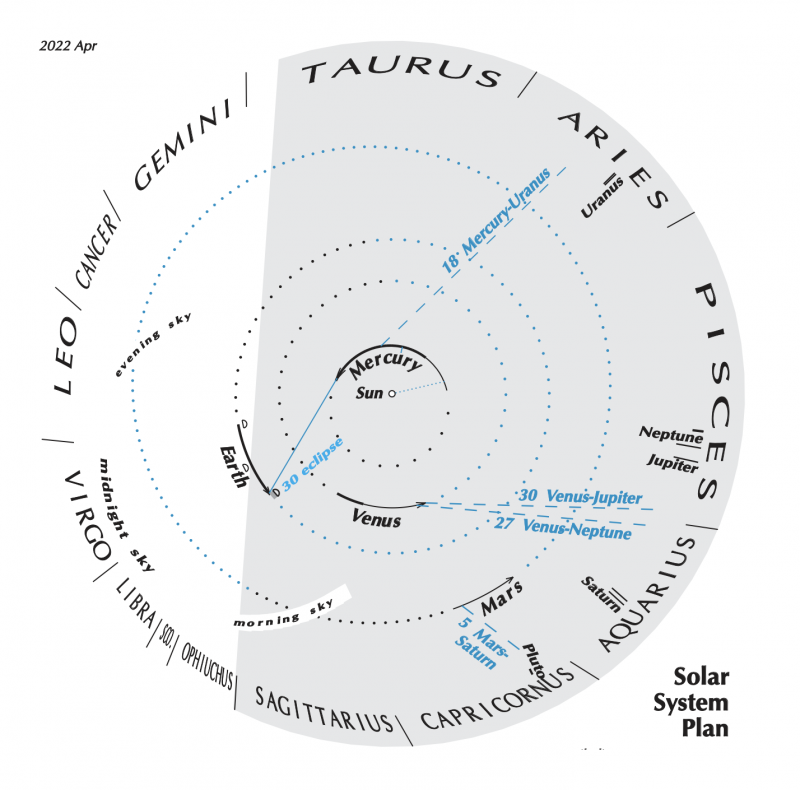

A comparison of elongations
Not all of Mercury’s greatest elongations are created equal. Some are greater than others. The farthest from the sun that Mercury can ever appear on the sky’s dome is about 28 degrees. The least distance is around 18 degrees.
Elongations are also better or worse depending on the time of year they occur.
In the autumn for either hemisphere, the ecliptic – or path of the sun, moon and planets – makes a narrow angle to the horizon in the evening. But it makes a steep slant, nearly perpendicular, in the morning. So – in autumn from either hemisphere – morning elongations of Mercury are best. Then Mercury appears higher above the horizon and farther from the glow of the sun. Evening elongations in autumn are harder to see.
In the spring for either hemisphere, the situation reverses. The ecliptic and horizon meet at a sharper angle on spring evenings and a narrower angle on spring mornings. So – in springtime for either hemisphere – evening elongations of Mercury are best. Meanwhile, morning elongations in springtime are harder to see.
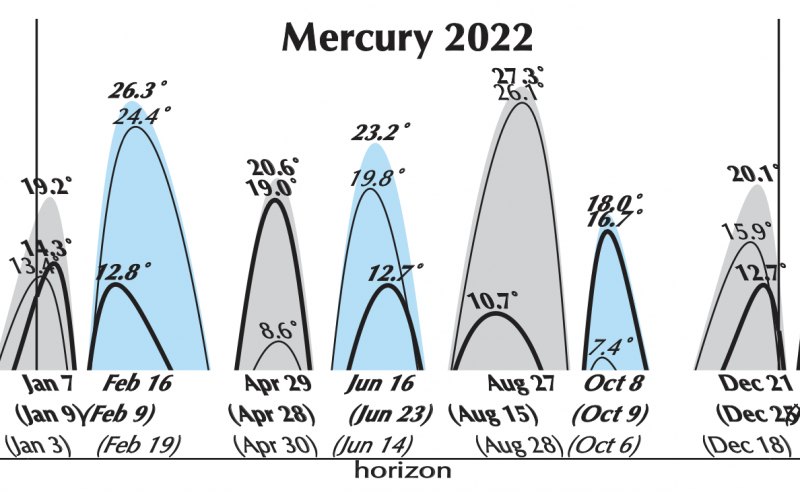
Photos from our community
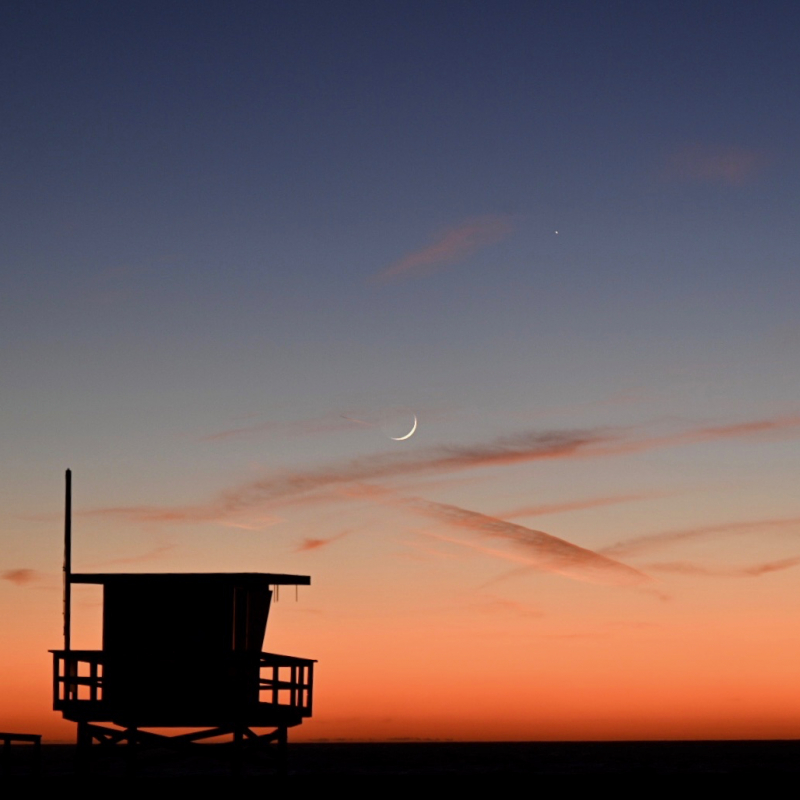
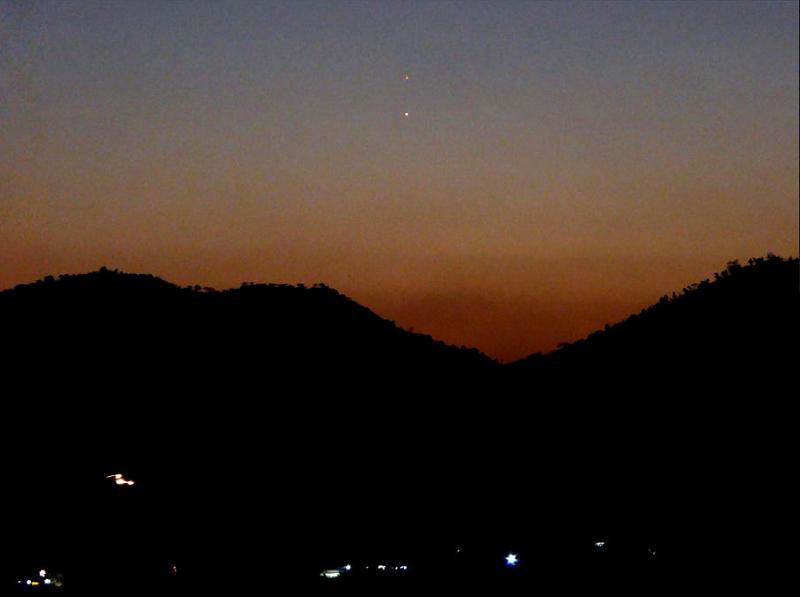
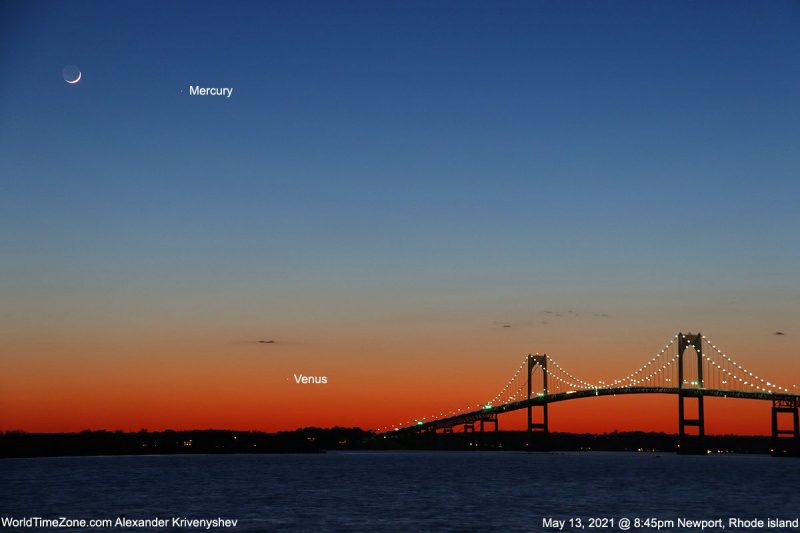
Submit your photo to EarthSky here.
Some resources to enjoy
Read about greatest elongations, superior and inferior conjunctions: Definitions for stargazers
See the moon phase for every day in 2022. EarthSky lunar calendars now available! Going fast!
Bottom line: For the Northern Hemisphere, mid-April to mid-May is Mercury’s best evening apparition of 2022.
The post Mercury after sunset: Start watching mid-April first appeared on EarthSky.
0 Commentaires